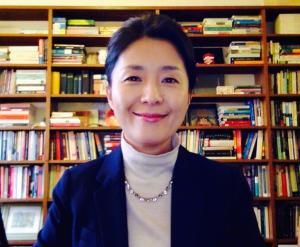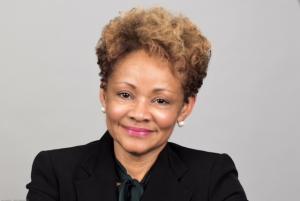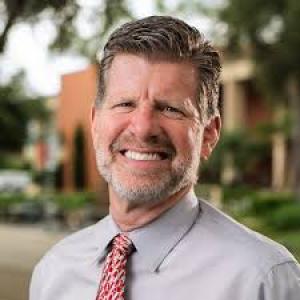Resources

On March 30, 2020, Daniel Prude, a 41-year-old Black man, died a week after being pinned to the ground by police officers in Rochester, New York, where our school is located. This incident sparked protests, with some former and current students serving as public street chaplains, providing prayers and spiritual support and calling for police reform. When students expand and act out what they have learned in the classroom, should I pretend nothing happened in the community and the world? Although the professor tries to take an apolitical position, students do not separate their learning from reading the world and living in the world. In a group addressing “Things they didn’t teach in Seminary,” a few former students asked practical questions such as how to respond to parishioners who resist sermons explicitly addressing or supporting social movements like #BLM. While types of activism vary—from hashtag activism to solidarity activism on the ground—and even if we do not use the term “activism,” our teaching necessarily involves our perspectives on social justice and our political positions and actions. Paulo Freire argues that because education functions to reproduce dominant ideologies, it can never be politically neutral.[1] Teaching involves “reading the world” beyond the boundary of the classroom. Teaching the biblical text and its cultural and geographical world is not limited to the historical past but addresses highly politicized territory where people still suffer from wars and occupation. Some may be concerned when teachers impose their political perspective or ideology upon students because teachers have power, but when we find our former, current, and future students acting as civic agents for change and religious leaders in social movements, our activism as teachers does not force them to believe or act according to our convictions. Instead, as Freire teaches, students have the right to challenge or reject the teacher’s perspective and the ability to form their own views and speak and act out their opinions. Many activists in the present time understand that what is critical in social movements is not charismatic leaders but the community. The student community has had to grieve and reflect on what they have learned, engaging the world. The pedagogical potential of performative grieving in times of state violence, argued for by scholars in education, came to the fore in my online teaching during the pandemic. I often had students who broke down because of losses—losses of persons, jobs, health—and because of the confusion that systemic racism brought during the pandemic. I was able to say to them, “It’s okay to say it’s not okay” or “It’s okay to cry,” not because I was stronger than my students, but because we needed such collective grieving. For me, building a community of mourning in the classroom was a gesture of activism. However, as Angela Davis said, if “freedom is a constant struggle,”[2] how long should we perform grief in our teaching? Teacher-activists have become exhausted, particularly in the past years. Critically-minded professors are wrung out by bringing social justice issues into our teaching, one after another (racism, gender inequality, heterosexism, economic injustice, colonialism, climate change, etc.). I create and teach courses like Global Read of the Bible, Feminist and Womanist Interpretation of the Bible, and Migration, Immigration, and Diaspora. Teaching such courses requires continuous engagement with and activism for social justice, as well as a breadth of knowledge. Such continued social challenges and grief causes emotional exhaustion. This is why we need to find communities of mourning and moments of contemplation. As I offered space for students in my classes to mourn, the Pacific Asian North American Asian Women in Theology and Ministry community (PANAAWTM) offered me a space for mourning when anti-Asian racism was climactic in the Atlanta mass shootings on March 17, 2021. Wo/men professors, students, and activists of Asian heritage gathered online to grieve, reflect, and pray together. A few sang Asian traditional songs and offered prayers of our ancestors. Through these practices, I gained spiritual strength, intellectual courage, and a clearer sense of commitment to teaching for social justice. I am grateful for another opportunity that the Wabash Center is giving four Asian and Asian American female professors in New Testament through a Peer Mentoring Clusters grant next year. I am sure that reflecting on teaching—even such seemingly objective courses as Hebrew and Introduction to New Testament, which two of my colleagues are teaching this summer—will lead us to grieve and be “contemplative in action,” because our teaching is not an individual act, but is always situated in the particular contexts where we struggle against oppressions and injustices on the institutional and social level. [1] Paulo Freire, Pedagogy of Freedom: Ethics, Democracy, and Civic Courage (Lanham, MD: Rowman & Littlefield Publishers, 1998). [2] Angela Davis, Freedom Is a Constant Struggle: Ferguson, Palestine, and the Foundations of a Movement (Chicago: Haymarket, 2016). Photo: Justine Murphy (@CitizenMurphy), "Brown," Twitter, September 16, 2020

When I occupy the authoritative epistemological space, when I take my place, at the head of a biblical studies course as a black woman, I am conscious of the radicalness of my embodied performance, intellectually and physically. White men are considered by the majority of academics to be the quintessential biblical studies experts, which is not unrelated to racism and sexism and their impact on white and nonwhite scholars and students. My intersectional identity as a black woman New Testament scholar and my decentering work are both disruptive of white men’s positionality and epistemological superiority. Sherene Razack states that “a radical or critical pedagogy is one that resists the reproduction of the status quo by uncovering relations of domination and opening up spaces for voices suppressed in traditional education.”[1] This blog post is my third critical reflection on the pedagogical collaboration between Dr. Dan Ulrich and me in which I taught a summer course on African American Biblical Interpretation and the Gospel of Luke for Bethany Theological Seminary/Earlham School of Religion and Columbia Theological Seminary students. I was the teaching professor, and Dr. Ulrich was the learning professor. He is a white cisgender man who has taught for over twenty-nine years; I am an African American woman with over fourteen years’ experience teaching biblical studies (for most of my career I was required to teach both testaments, including Hebrew and Greek languages). Our syllabus identified me as the teaching professor. Because of the tendency of students to genuflect to white male authority at the expense of women and black and brown scholars, I chose not to allow Dr. Ulrich to act as an editing teacher editing teaching or to participate in the discussion forums, except the one reserved for introductions. In that forum at least one white student stated that she looked forward to learning from Dr. Ulrich. I sensed there were times when some students wished Dr. Ulrich would rescue them from my authoritative and often overtly culturally-situated epistemologies and gaze. My gaze as a black woman was temporary, but the white gaze is inescapable. The white gaze to which black and brown scholars are subjected is pervasive, invading the classroom and transcending it. The white gaze requires that black and brown peoples constantly fortify themselves against attempts to diminish and discount their epistemological resources and constructions, especially when (or to preclude or mitigate) the decentering whiteness. I sometimes invited Dr. Ulrich to contribute to the discussion, but I never relinquished my authority. To be under the white gaze is to be constantly on guard. I did not attempt to prove the legitimacy of my presence and authority but to stand in it, unapologetically, in each synchronous class session and discussion forum. I did hesitantly, at first, include Dr. Ulrich in the Zoom small group break-out sessions. Each time, I visited every group except the one to which I randomly assigned him. I had to trust that he would respect my authority even when beyond my gaze, and I believe he did. I did not police him in those groups. I do not know if Dr. Ulrich experienced to any degree, even if for a few hours for two weeks, the gaze or surveillance to which black and brown bodies are subjected perennially. White professors often include our works as required readings, but the extent and the ways in which students are permitted to value or accept them as authoritative or legitimate are policed. For example, black students have complained of white instructors teaching feminist courses that include womanist readings but that also subsume womanism under feminism, as if it is feminism’s intellectual child, or mitigate womanism’s political agenda by alleging that womanism is not as political, if at all, as feminism. During this COVID-19 pandemic, more white scholars are inviting black and brown scholars into their classrooms via Zoom to discuss their works. Hopefully, these opportunities for hearing from the scholars themselves will limit attempts to diminish and/or misrepresent our work, whether intentional or not. When I occupy the space at the head of a classroom, even when a white male colleague does not occupy the seat of learner, I do so in the minds of many students, across race, ethnicity, and gender, as a proxy or surrogate for white male biblical scholars/ship. Over the years, (last year was no exception), students, primarily white across gender, have made statements like “Dr. [white male] does it this way or said this.” Early in my career, two separate white women students, in two separate courses—one in biblical hermeneutics and one in Hebrew Bible—believed it their duty to notify me that “they did not have to agree with me.” One objected to my use of the NRSV with apocrypha, informing me that it was not a Christian Bible. I don’t remember to what the other woman objected. But in my mind, their objections had more to do with who I am—a black woman—than with what I asserted. I was the first black woman biblical scholar hired at that institution. In most seminaries and theological or divinity scholars, students will never be taught by a black man or woman biblical scholar. Unsurprisingly, of twenty-one students who responded to one of the collaborative course the course Moodle polls, only one had ever taken a Bible course taught by a black biblical scholar. One student had read a book by a black woman biblical scholar (that same student). All except one student had never read anything more recent than True to Our Native Land (2007). Black biblical scholars have published quite a bit since then. My work in that volume is a lot less progressive than my current work. In fact, as I noted in a previous blog, Dr. Ulrich stated that had he read my more recent work, he might not have asked me to teach this course. I am clear that my work is “radical” in relation to malestream Eurocentric biblical interpretation. It is still radical to encounter a black woman at the center or helm of a biblical studies course; it remains radical to center the bodies, voices, struggles, creativity, oppressions, scholarship, and communities of black women and men. In another Moodle poll, students responded to the question about reading black biblical scholars. For them black biblical scholars, black theologians, and black ethicists are interchangeable; they listed James Cone, Delores Williams, and other nonbiblical scholars, for example, in response to the question about the black biblical scholars they had read prior to this course. This response highlights the uncritical commodification and racialized substitutability of the intellectual contributions of black and brown peoples, that is less often encouraged and does not so readily occur with white biblical scholars. Instead of taking the time to find works produced by black and brown biblical scholars, white scholars and students, especially, will substitute one black or brown body for another in their publications and in biblical studies classrooms. An anti-racism agenda requires that we do differently. Notes [1] Sherene H. Razack, Looking White People in the Eye. Gender, Race, and Culture in Courtrooms and Classrooms (Toronto: University of Toronto Press, 1999), 44. This process of revelation and disruption is accomplished through “the methodology of storytelling.”

I teach biblical/theological studies. Each semester, I seek to guide students toward a deeper understanding of my conclusions concerning the major theological points of the Old Testament. I teach them that, as a result of sin, the world in which we live is not the world as God created it to be. The world is “broken.” However, the amazing story of the Old Testament shows us that God, despite the sinfulness of humanity, is making a way for humanity to be reconciled to him. The brokenness of this world is the primary reason we find difficulty present in our lives on such a regular basis. The story of the Old Testament teaches us that God uses these various kinds of difficulties to command humanity’s attention so that they turn their hearts toward him in dependence. My desire as a professor of the Old Testament is to find real connections to my students’ lives so that the Old Testament is not viewed as merely an ancient book, which has no real value to their contemporary world. And every semester, it is a battle because most of them are simply not old enough, nor do they have the life experiences that are sufficient enough, to lead them to more deeply understand the powerful truths of the Old Testament. Outside of the minor irritations of life, the majority of the freshmen or sophomore students in my courses lack that which would lead them to truly understand the theological points I am trying to make and, therefore, they can lack an interest in making the necessary connections. They still feel a little invincible and at the top of their game. Enter our global pandemic. I could not ask for a better “soft ball” to be thrown at me. It is a perfect scenario for the teachings of the Old Testament to come alive. This global pandemic has created the opportunity to openly discuss the issues confronting our world, and even the issues that confront my students, with the goal of connecting all of it to the profound theology of the Old Testament. Every situation this global pandemic brings into their lives becomes a special opportunity for them to understand the deeper realities of living in this world as we know it and all of its subsequent difficulties. Even if it does not touch their own lives in meaningful ways, they are bombarded with constant news updating them on the tragedies that other people in this world are up against. They feel it. And they are moved by it. As numerous emotional stories flow through various information platforms, it has an impact on them, making them more prepared to listen . . . and to think. So, my responsibility as a professor is to take full advantage of a crisis that I could not have planned. For my teaching, it is truly the “perfect storm” for the application of my course content. With the emergence of this global pandemic, my class is more interested in engaging the focus of my teaching. And they will be the better for it. Of course, this causes me to reflect on what might be less obvious in the everyday events of our world, which, if properly utilized, could create the same opportunity for my students to impacted. Perhaps, as a teacher, I have grown somewhat lazy in my attempts to connect the dots for my students. This has led me to think more deeply about the way I approach my course lectures. Consider the many issues that potentially confront my students on a daily basis: • At a private Christian liberal arts university, costing around $40,000 per year, this may not be an issue for my students, but one cannot help but be aware of the persons who have made a bus stop their home or walk down the street pushing their shopping cart full of their life’s possessions or who scrounge around restaurant trash cans in search of food. • Sex or human trafficking. It is difficult to believe that either sex or human trafficking could be happening in our neighbor’s home across the street or in an apartment complex in close proximity to our home, but it is possible. These “invisible” people may be closer than we think. It is a horrible issue in our world, and we can put it out of our minds. • Drug/alcohol abuse. More people will die of drug abuse in the USA than will die of this global pandemic in the year 2020. Drug abuse wrecks families, tears apart marriages, and leads to financial ruin. Students have more than likely seen the impact of this issue in one way or another. My point is that, although these issues may not directly impact my students’ lives, the global pandemic might not either. But, unlike the global pandemic, these other issues exist continuously in the world which my students and I inhabit. Oftentimes, these issues become background noise to our comfortable little worlds, but they are there. My job as a teacher is to work harder to make these connecting points when my students might be having difficulty making connection on their own. Because of this, I am thankful for the global pandemic. I know that my subject matter, the theology of the Old Testament, made it fairly easy for me to make the connections between course content and this global pandemic, but I assume that, with a little bit of thinking, you can do the same. And, if you do, it will make your course content come alive and your students will be better able to draw value from the content of your course. And, if we can do it with a global pandemic, then I bet we can do it better in the situations of everyday life. I encourage you to go for it!